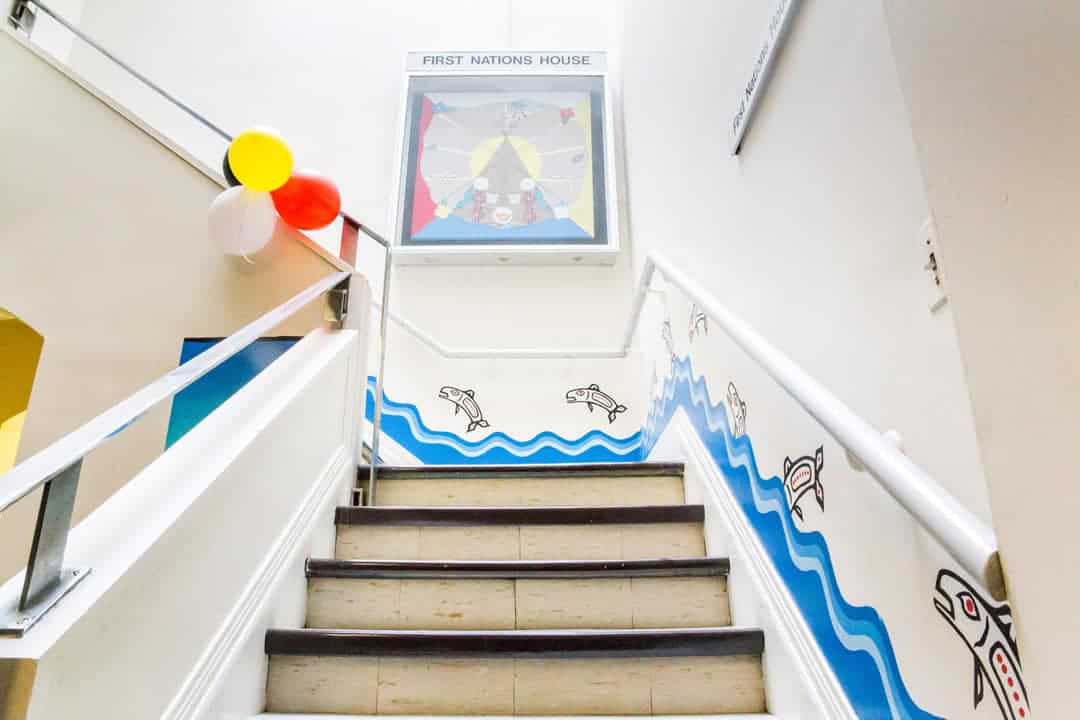On March 18, the First Nations House hosted a full moon fire gathering in the Earth Sciences Courtyard, inviting community members to participate and learn about the sacred fire. These gatherings are offered monthly, weather permitting.
In an interview with The Varsity, Jenny Blackbird, the Indigenous student life coordinator at First Nations House, discussed the gathering, as well as the important role the First Nations House plays in fostering a sense of community among Indigenous students and providing necessary resources for them.
The full moon fire gathering
Blackbird described the gathering as a teaching opportunity. “People could come and learn if they had questions about how to light a sacred fire, or what a sacred fire is,” she said. There are various types of traditional fires that are lit for different purposes, such as fires for celebrations, cooking, and grieving.
Blackbird remarked that such events provide an avenue for experiential learning for non-Indigenous students. “That’s the advantage of hosting something that U of T students… can come witness, observe, and learn from.”
Beyond an opportunity to learn, the gathering was a chance for members of the community to connect. Around the fire, people shared stories and threw tobacco into the fire as a gesture of gratitude, grieving, or letting something go. Blackbird explained that in different communities, tobacco is used for “communication and intention.”
“Oftentimes people will hold that tobacco while they’re praying or while they’re singing, and then [they] burn it. Then the idea is that the prayers will go up to Creator in the smoke,” she said.
For Indigenous students and faculty, these ceremonies are equally important in fostering a sense of community. “I think that it might be comforting for them to know it’s here,” Blackbird said. She added that this was a great opportunity for people to get together and learn in a socially distanced manner.
The moon is a particularly important symbol for many Indigenous communities. Blackbird explained that the decision to hold the event under a full moon was in recognition of this. “The moon governs over all of the waters… human beings, and I guess every animal, has water inside of them,” said Blackbird, and added that this can be why different phases of the moon can influence moods and thoughts.
Keeping culture alive
Blackbird also commented on how these ceremonies not only facilitate connections between Indigenous peoples, but they also cultivate the sharing of cultures and history. “The folks that came over on the first boats decided that Indigenous people were not human,” she said. “So Indigenous people need to continue to share their teachings with one another.”
The concern of keeping culture alive is especially manifest for urban Indigenous peoples, as they “come from so many different places and different nations.” Blackbird believes that it is critical for there to be spaces available to foster these relationships. Hosting events like the full moon fire gathering helps create these spaces.
Role of the First Nations House
First Nations House is a space designed for Indigenous students that allows them to celebrate their own unique cultures and traditions. Blackbird explained, however, that not all students know that the First Nations House exists or what resources it has.
She continued, “There has to be so much planning put into moving things around or creating spaces, that I think this little area is really important. First Nations House can offer the space for students to do these things.”
Blackbird highlighted two areas that she believes the university can improve upon. “I think that colonized spaces can and should do better in designating spaces,” said Blackbird. She further feels that there should be a responsibility for non-Indigenous people to educate themselves and others. “Oftentimes, we do such a job at having to educate everybody else and we don’t often get to just live our lives,” she explained.
Blackbird stressed that these spaces are important to the broader community of Indigenous peoples at U of T and in Toronto. “[For] Indigenous people, this is our territory… but colonization got in the way,” said Blackbird. This is why opportunities such as the full moon fire gathering are so important.
The First Nations House is integral to community building, as it provides the space and the means for Indigenous communities to hold events like these.
Apart from this monthly event, Indigenous students always have the option of coming to the First Nations House on Spadina Crescent to receive support. The First Nations House has wellness counsellors and Elders who are available should students need guidance.


